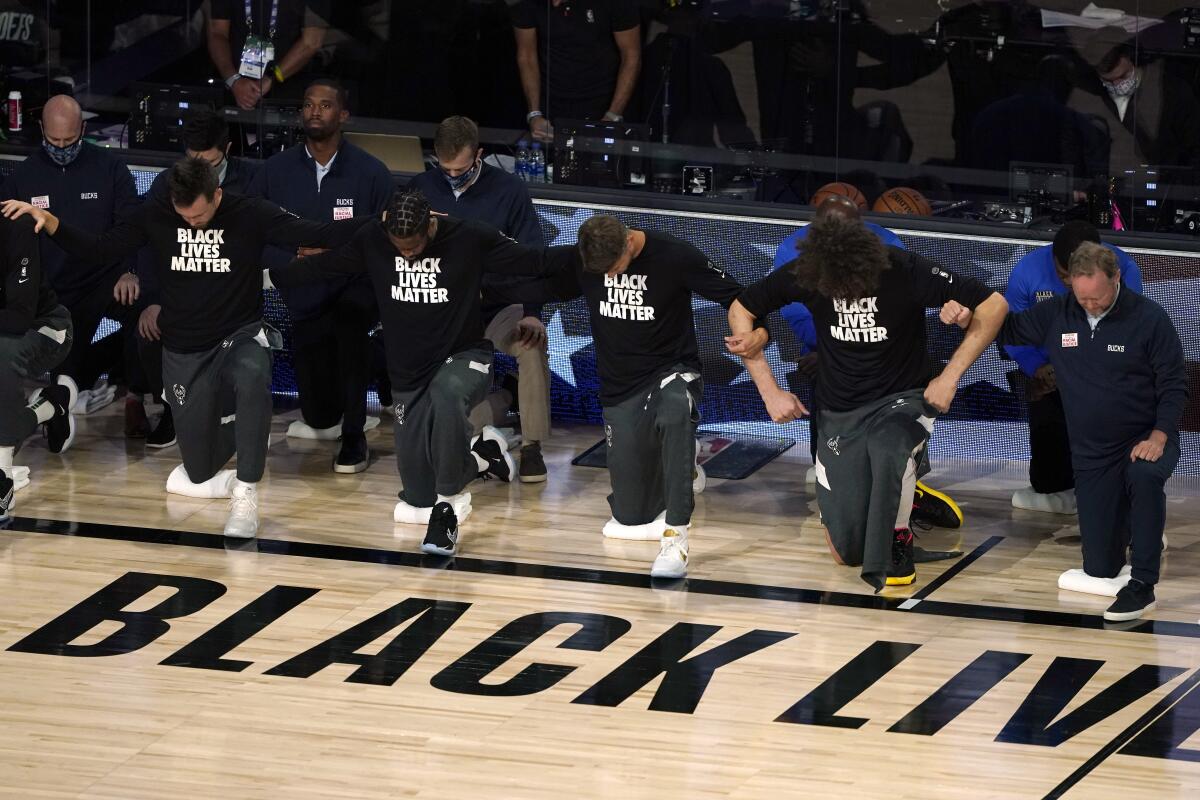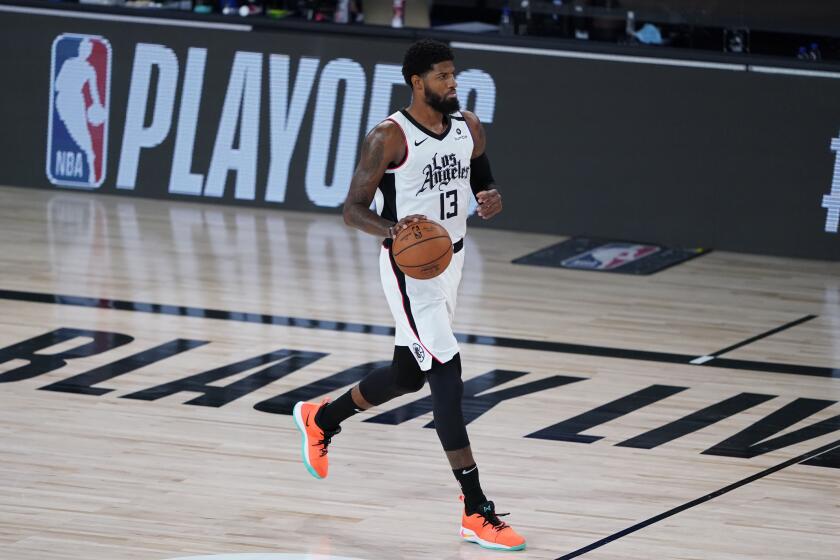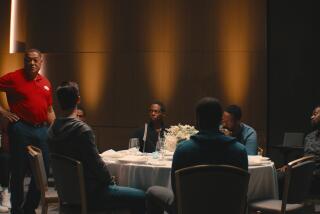Bucks followed their hearts, not an NBA-approved script, and showed playersâ power

ORLANDO, Fla. â The ESPN Wide World of Sports Complex is eerily quiet. Youâre more likely to run into a hand-sanitizing station than a person, the only sounds are the easy listening music of a dentist waiting room and the humming of the occasional fan, blowing at full speed to cut through the Florida humidity.
Somehow, the complex was even more desolate the last three days, six NBA playoff games postponed as part of a sports-wide reaction to continuing racial injustice and brutality in American streets.
Basketball returned Saturday inside the NBAâs bubble, with Milwaukee, the team that started it all, finally taking the court again and finishing off its series victory over Orlando. As Bucks players explained the moments that led to their protest, it became remarkable that such a loud noise could be created from a place this quiet.
It all started with one person and reaffirmed the belief in many that what NBA players are doing in Orlando matters beyond basketball.
George Hill, 34, is a reserve guard on the Bucks, the kind of player NBA diehards know and respect but a guy probably best known for being traded to Indiana for the draft rights to Kawhi Leonard.
Raw from the violence in Kenosha, Wis., including the police shooting of Jacob Blake, Hill decided Wednesday morning he didnât want to play in that afternoonâs Game 5. He was made inactive, and his teammates found out why only 20 minutes before the game.
With the Clippers looking to eliminate Dallas in Game 6 on Sunday, Paul Georgeâs peers could relate to his slump and mental stress that brought it on.
So instead of letting Hill and teammate Sterling Brown, himself a victim of police brutality who also decided to sit, protest alone, the rest of the team quickly joined.
âYou canât script change,â Bucks guard Wesley Matthews said. âYou canât script moments.â
Hill said there were times when he still didnât want to be on the court Saturday as his team beat Orlando 118-104, moving the Bucks into the second round. But his teammates stood with him Wednesday, and he wanted to pay them back.
While there has been no shortage of attempts to raise awareness for social justice inside the bubble â players have knelt during the national anthem, put slogans on the backs of their uniforms and used their interview time to push for action â all of it had gone through league filters.
The action Wednesday, as Matthews explained, was âorganic.â What followed, with the rest of the playoffs pausing for three days, with sports across the continent shutting down and players protesting, that was organic too.
This wasnât the plan â there was no plan, really. It wasnât crafted by a public relations firm. No one set out to make history.
âI donât want any credit for it,â Hill said. âI just was a human and followed my heart.â
While it felt like a lot had changed since Wednesday, it was amazing how the reboot could feel so familiar Saturday, everything seeming as normal as playoff basketball in late August, inside a bubble designed to keep a pandemic at bay, can be.
Players took the floor for pregame workouts, nodding their heads as they went through drills while Kendrick Lamar rapped, âWe gonâ be alright.â When a ball jetted across midcourt, everyone stopped to make sure a player wouldnât accidentally step on it and destroy an ankle. The public address announcer tested the microphone and sound system.
As the players cleared the court for their trips back to the locker room, the P.A. man instructed a nonexistent crowd to take a moment silence to acknowledge the deaths of former NBA player Cliff Robinson, iconic college coach Lute Olson and actor Chadwick Boseman, a fixture at NBA games. Then the national anthem played â with no one on the court.
For a second it seemed like another escalation, a new way to protest and re-engage the public. But, the song cut off quickly and it became clear that it, like the moment of silence before, was merely a rehearsal.
The Bucks didnât have to demonstrate again Saturday, though they did kneel again when the anthem actually played, as every team in the bubble has. While the off-court work theyâre interested in is far from done, they showed how quickly their collective power could be brought together. And it started with Hill, a nine-point-per-game reserve.
âIt was humbling, special and really awe-inspiring to see the reverberations throughout our league â and the world, honestly,â Bucks center Brook Lopez said. â⌠It was incredible to see it start from one person and touch all the corners of the globe.â
More to Read
Go beyond the scoreboard
Get the latest on L.A.'s teams in the daily Sports Report newsletter.
You may occasionally receive promotional content from the Los Angeles Times.












